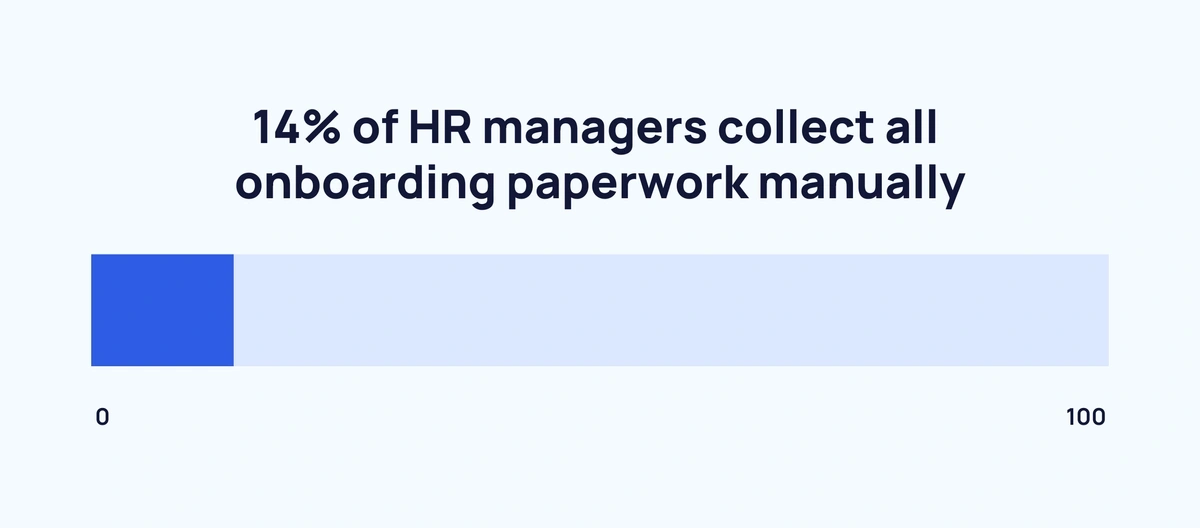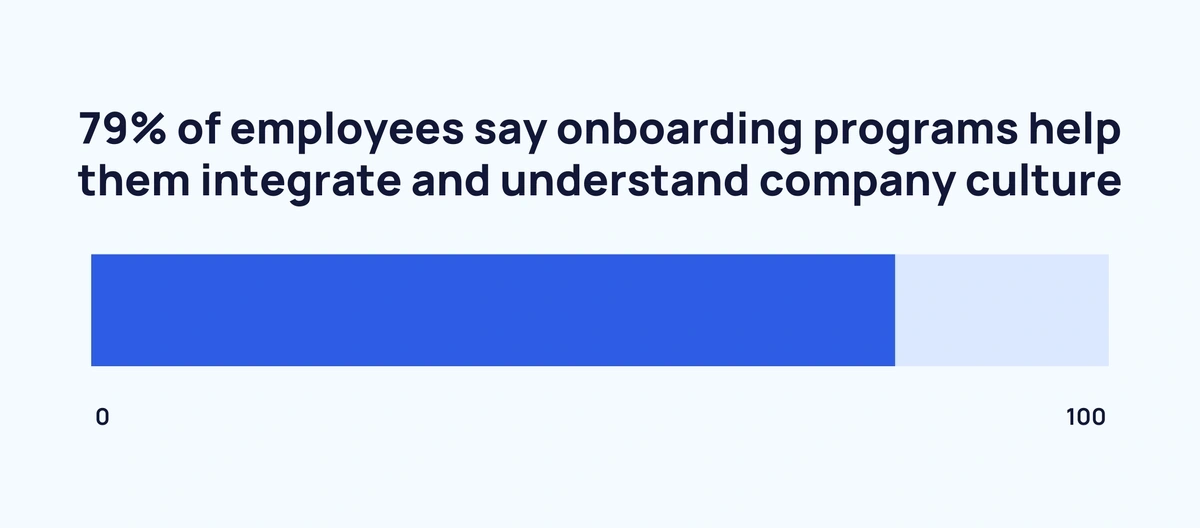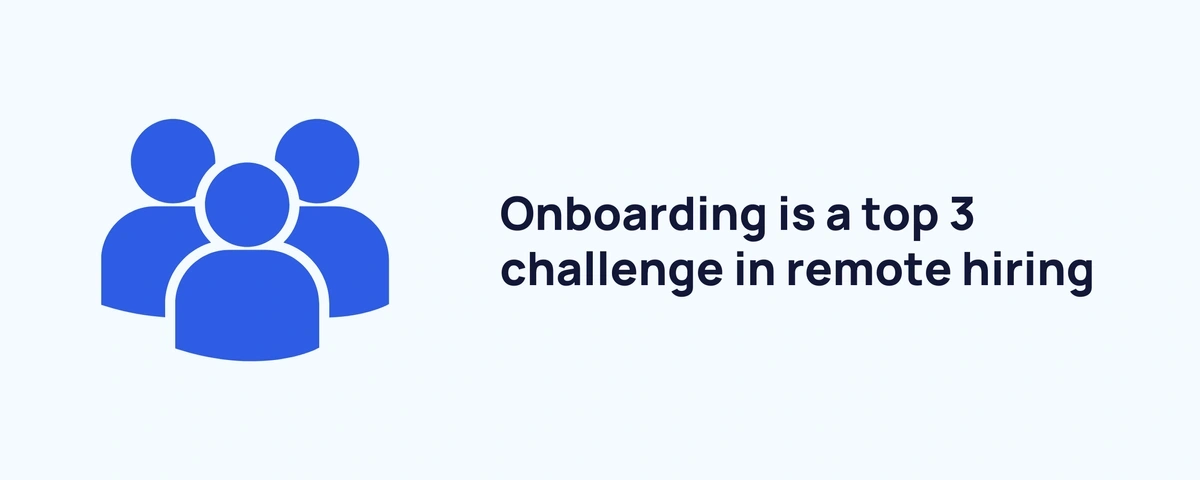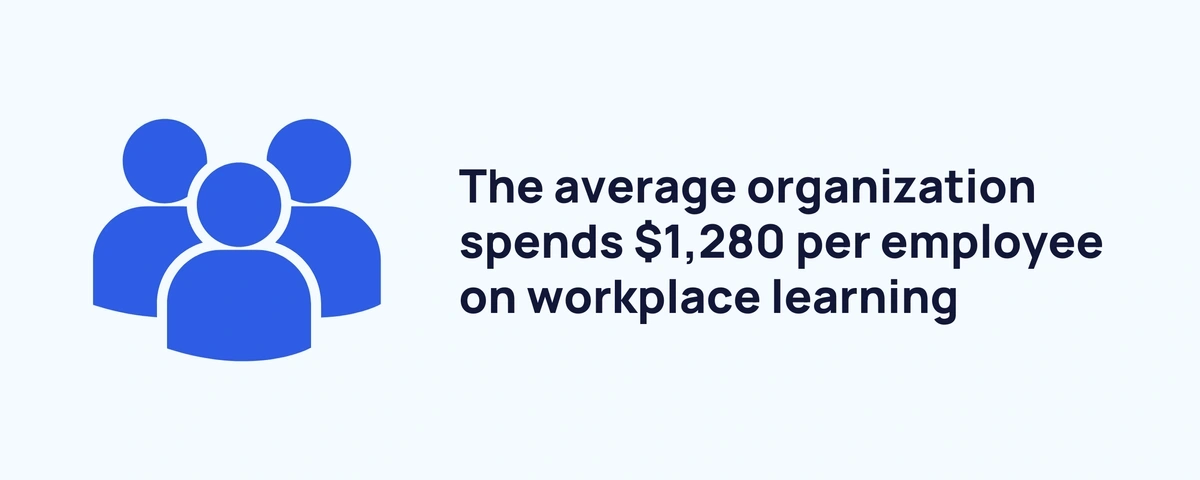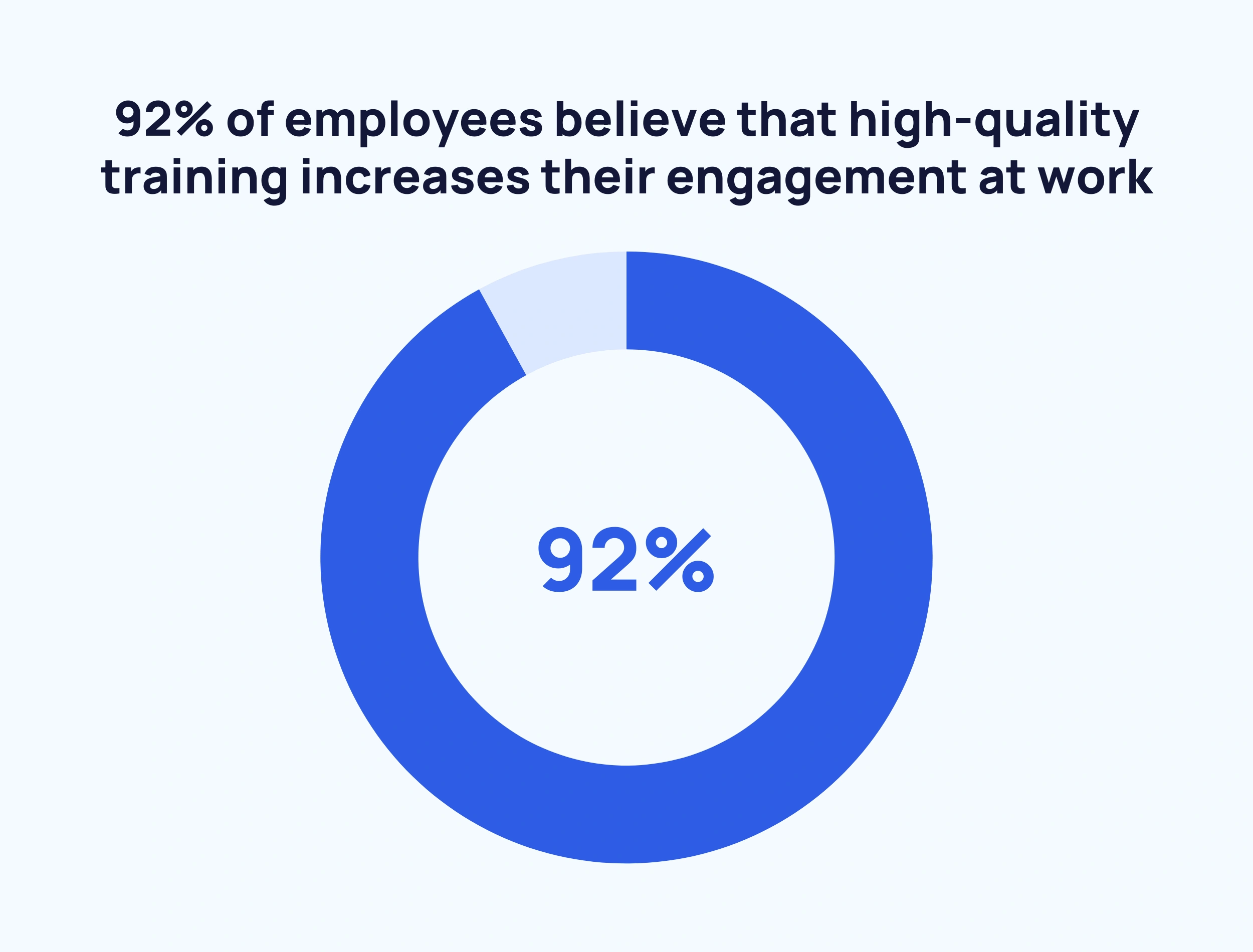
70+ Employee Onboarding Statistics (2024)
Employee onboarding is more than just an HR checklist and a few days of orientation.
It’s an ongoing process that can — and should — last for months, helping both new hires and organizations learn how to get the most value from a new working relationship.
Effective onboarding and successful new hires go hand-in-hand.
A rushed onboarding process can lead to new hires feeling lost in their role, burning out, and quickly seeking opportunities elsewhere.
Ongoing, supportive onboarding can help new hires quickly become key assets within an organization.
How are today’s organizations handling their employee onboarding processes? What are they getting right, and what can be improved?
Keep reading to find out.
Top Employee Onboarding Statistics
This report has over 70 of the latest employee onboarding statistics. For a quick look at the world of onboarding, here are the top stats:
- 36% of employers don’t have a structured onboarding process
- Organizations with strong employee onboarding can increase retention by 82%
- The average onboarding cost is $1830 per hire
- Just 12% of US employees say their organization has a good onboarding process
- 79% of employees say onboarding programs help them integrate and understand company culture
- 81% of new hires say they feel overwhelmed with information during the onboarding process
Next up, we’ll look at the employee onboarding process.
Employee Onboarding Process Statistics
Every organization has a unique onboarding process. Some are effective at integrating new employees into the workplace, while others simply cover the bare minimum.
These stats reveal the overall trend in how today’s companies structure their onboarding programs.
Around 1 in 3 of employers don’t have a structured onboarding process (CareerBuilder)
Organizations that lack a formal onboarding process tend to experience negative results. 16% report lower productivity, 14% have more inefficiencies, 12% have higher employee turnover, and 11% report lower employee morale.
25% of employers only spend one or two days onboarding (CareerBuilder)
How long should the onboarding process take? Most Human Resources professionals would say at least three months. Currently, just 11% of employers have onboarding processes that span three months or longer.
26% say they spend a week onboarding while 21% say they spend up to a month.
Only 49% of employers provide a company overview during onboarding (CareerBuilder)
Employers are skipping some critical aspects of onboarding. Only 45% say they provide ongoing one-on-one training to new hires. Additionally, just 43% introduce new hires to important people in their department.
Just 3 in 20 HR managers collect all onboarding paperwork manually (CareerBuilder)
Most HR departments have at least gone partly digital, which saves tremendous time onboarding new hires. Manually collecting new hire information has its consequences, according to HR professionals:
- 37% experience heavier workloads
- 35% experience higher stress
- 28% say they lose important paperwork
- 22% reported delayed start dates
- 9% said new hires walked away from the position
The average onboarding cost is $1,830 per hire (Leena AI)
Small and medium-sized companies spend between $600 and $1800 onboarding new hires. For large companies, that number goes up to $3000.
92% of HR professionals are familiar with AI and Automation’s role in the hiring and onboarding process (Leena AI)
HR managers are getting on board with AI and Automation. 90% say they recognize AI’s importance in the future of onboarding. 87% are very committed to integrating AI and Automation into their onboarding process. We've done a full breakdown of AI for human resources here.
50% of HR professionals believe that AI can improve the onboarding experience (Leena AI)
There are several perceived benefits to including AI and Automation in the onboarding process. Many HR managers see it as a tool to lower costs (38%) and increase flexibility (43%). Other obvious benefits are eliminating paperwork (33%), minimizing errors (40%), and reducing repetitive admin tasks (35%).
One in three employees haven’t undertaken an onboarding process (Talmundo)
34% of new hires say their new role didn’t include an onboarding process. Of those, 84% say an official onboarding program would have been useful.
Only 12% of US employees say their organization has a good onboarding process (Gallup)
When employees are satisfied with their onboarding process, it tends to carry over into their careers. 70% of employees who had a good onboarding experience believe they have the best possible job.
On the other hand, around 8% of employees said they started their job without any onboarding process whatsoever.
Employee Onboarding Benefits
The best onboarding programs have countless benefits. The latest research helps us quantify exactly how great onboarding helps both new hires and organizations.
Good onboarding programs have multiple benefits (CareerBuilder)
How can organizations and new hires benefit from a great onboarding process? 2,300 hiring managers weighed in:
- 49% said new hires were more engaged at work
- 46% said new hires were more confident in their roles
- 45% said new hires had more trust in their organization
- 31% said outstanding onboarding led to lower employee turnover
- 21% said outstanding onboarding helped their organization meet revenue goals
Retention can increase by 82% for organizations with a strong onboarding process (Brandon Hall Group)
Onboarding sets the tone for new hires, so it’s not surprising that solid onboarding encourages them to stick around. It also helps with employee productivity: new hires who had a strong onboarding period are 70% more productive.
77% of HR professionals believe onboarding will become even more important in the future (Talmundo)
Most HR professionals agree on the importance of onboarding. Only 1% of the respondents said they felt the importance of onboarding would decrease in the future.
Around 4 in 5 employees believe onboarding programs help them integrate and understand company culture (Talmundo)
78% also said their onboarding programs gave them a positive candidate experience and helped foster a positive attitude toward their employer. And just over half (51%) said they became proficient in their roles in less time.
77% of employees believe that easy access to information helps keep them productive and engaged at work (Glean)
When new hires can’t find the information they need, productivity grinds to a halt.
Glean’s research found that the average employee searches for a new piece of information 35 times per week and will spend up to 13 minutes searching before asking for help. That’s over 7 ½ hours lost every week.
Employee Onboarding Challenges
The latest statistics suggest that most organizations don’t onboard well. But what are the consequences of poor onboarding? These stats uncover some of the challenges and frustrations that result from onboarding gone wrong.
The disconnect between hiring and onboarding processes is the top onboarding challenge for organizations (Leena AI)
When asked for their top 5 onboarding challenges, 40% of HR professionals mentioned the disconnect between hiring and onboarding processes. That disconnect often comes about when an engaging and exciting hiring process is followed by a cold, administrative onboarding process.
The other onboarding challenges in the top 5 are employee engagement, length of programs, personalization, and automation.
Onboarding is one of the top challenges in remote hiring (Workable)
In a global survey of 366 HR professionals, Workable asked what the top 3 remote hiring challenges are. 37.4% of respondents mentioned remote onboarding and training—higher than any other response.
Over 25% of employees say they lacked critical information about their roles before accepting a job offer (HiBob)
Too often, employees get blindsided when they realize their new role doesn’t quite match the job description before they were hired. Only 40% of employees say their current job matches the expectations set during their interview.
81% of new hires say they feel overwhelmed with information throughout the onboarding process (Glean)
Information overload is a serious problem for new hires. 81% say their organizations use at least 6 apps or digital tools, while 33% use at least 11.
As a consequence, 42% agreed that information was scattered in too many different locations.
Lack of leadership or mentorship can exacerbate those issues further: 38% of new hires say they feel lost about who to turn to for answers.
Learning job duties and expectations is the top onboarding challenge for employees (Talmundo)
66% of new hires say they struggle with job duties and expectations during onboarding. 64% say there was a lack of clarity around their role in the organization, while 56% experienced issues with technology access.
Employee Training Statistics
While onboarding and training are two distinct activities, they tend to overlap during the first few months after hiring. Training can start toward the very beginning of the onboarding process and continue long after onboarding ends.
On average, organizations spend $1,280 per employee on workplace learning (ATD)
The average cost per employee per training hour is $103, and the average employee spends 32.9 hours on learning and development.
31% of US employees haven’t received any formal on-the-job training (Axonify)
Just over two-thirds of American workers get formal training, and of those who do, only 57% say it’s effective.
Around 9 in 10 employees say that high-quality training increases workplace engagement (Axonify)
What do employees consider “high-quality” training? 90% believe training programs should be engaging and fun. 80% also believe that training should be ongoing.
31% of Gen Z and Millennial job-seekers look for positions that provide learning and development opportunities (LinkedIn)
Job-seekers in the 18-35 age range (aka Gen Z) place more emphasis on growth than any other demographic. 35% say they look for job openings that provide opportunities for advancement and growth within the organizations.
Wrap Up
Navigating a new job can be treacherous. An onboarding process should act as a map, compass, and personal guide—invaluable tools that help new hires hit the ground running.
Companies that onboard the best tend to automate where possible, assign mentors to new hires, and approach onboarding with the same energy and excitement as their hiring process. They’re also aware that onboarding never really ends. New hires need ongoing support.
Based on the numbers, most organizations drop the ball with onboarding. Overhauling their onboarding process can boost employee engagement, reduce turnover, and ultimately improve their bottom line.
Stop Guessing, Start Growing 🚀
Use real-time topic data to create content that resonates and brings results.
Exploding Topics is owned by Semrush. Our mission is to provide accurate data and expert insights on emerging trends. Unless otherwise noted, this page’s content was written by either an employee or a paid contractor of Semrush Inc.
Share
Newsletter Signup
By clicking “Subscribe” you agree to Semrush Privacy Policy and consent to Semrush using your contact data for newsletter purposes
Written By


Josh is the Co-Founder and CTO of Exploding Topics. Josh has led Exploding Topics product development from the first line of co... Read more


